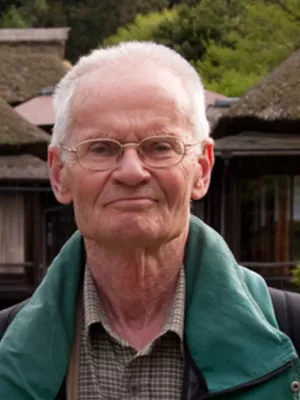
Björn Berglund
Professor emeritus

New insights on the Yoldia Sea low stand in the Blekinge archipelago, southern Baltic Sea
Författare
Summary, in English
Abstract in Undetermined
One sediment core from the Jarnavik bay in Blekinge archipelago has been investigated for its content of pollen and diatoms and its chemical properties. Two levels were also dated by radiocarbon. Based on the results the sediment sequence analysed has been divided into three environmental units largely corresponding to the lithology of the sequence. A lowermost unit consisting of weakly varved and homogeneous clay was deposited during the end of the brackish phase of the Yoldia Sea at a moderate water depth. On top of this unit a gyttja-clay unit was deposited. The onset of the deposition of this unit has been dated to c. 11 100 cal. yrs. BP. An increasing organic production and increased terrestrial influence is recorded in the chemical data and a very shallow water depth is indicated in the pollen and diatom flora. These results point to conditions in a bay probably isolated from the Yoldia Sea. A local tentative shore displacement curve have been constructed and it is proposed that this unit represents the low stand at c. -18 m during the Yoldia Sea stage in this part of the Baltic Sea basin. The uppermost unit consists of homogeneous clay with a low content of organic carbon. An increasing water depth is indicated by the composition of both pollen and diatoms. The diatom flora also displays an increase in freshwater species. This environmental change was probably the result of a transgression in the beginning of the Ancylus Lake stage.
One sediment core from the Jarnavik bay in Blekinge archipelago has been investigated for its content of pollen and diatoms and its chemical properties. Two levels were also dated by radiocarbon. Based on the results the sediment sequence analysed has been divided into three environmental units largely corresponding to the lithology of the sequence. A lowermost unit consisting of weakly varved and homogeneous clay was deposited during the end of the brackish phase of the Yoldia Sea at a moderate water depth. On top of this unit a gyttja-clay unit was deposited. The onset of the deposition of this unit has been dated to c. 11 100 cal. yrs. BP. An increasing organic production and increased terrestrial influence is recorded in the chemical data and a very shallow water depth is indicated in the pollen and diatom flora. These results point to conditions in a bay probably isolated from the Yoldia Sea. A local tentative shore displacement curve have been constructed and it is proposed that this unit represents the low stand at c. -18 m during the Yoldia Sea stage in this part of the Baltic Sea basin. The uppermost unit consists of homogeneous clay with a low content of organic carbon. An increasing water depth is indicated by the composition of both pollen and diatoms. The diatom flora also displays an increase in freshwater species. This environmental change was probably the result of a transgression in the beginning of the Ancylus Lake stage.
Avdelning/ar
- Kvartärgeologi
Publiceringsår
2007
Språk
Engelska
Sidor
277-285
Publikation/Tidskrift/Serie
GFF
Volym
129
Dokumenttyp
Artikel i tidskrift
Förlag
Taylor & Francis
Ämne
- Geology
Nyckelord
- Baltic Sea
- Blekinge archipelago
- pollen
- diatoms
- submarine pine stumps
- Yoldia Sea
- Yoldia regression
- Ancylus Lake
- Ancylus transgression
- local Blekinge shore displacement curve
Status
Published
ISBN/ISSN/Övrigt
- ISSN: 2000-0863

